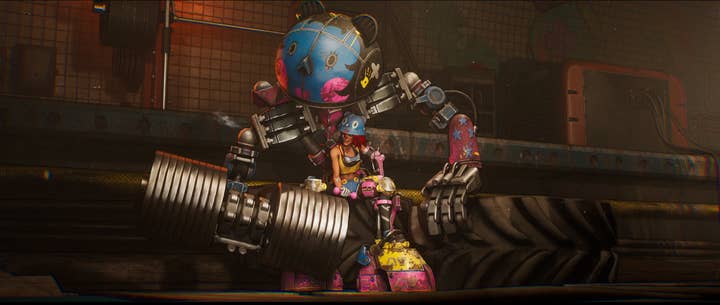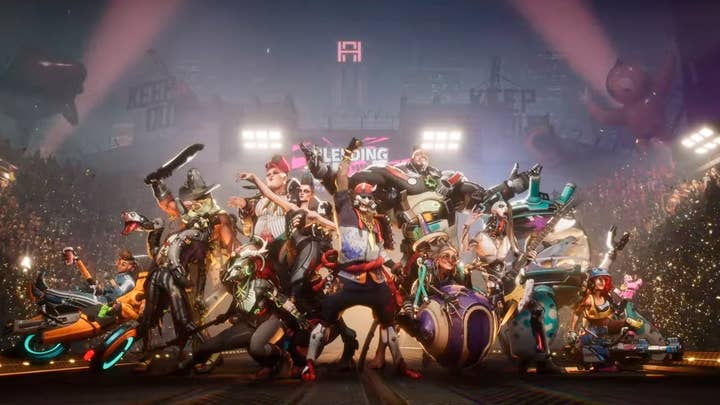Breaking the formula: How to make a standout game trailer
From Port Royale 4 to Bleeding Edge, Flipbook Studio's Andrew Lord details what can make for a memorable trailer
Trailers are central to any game's marketing plan. They provide potential players with their very first glimpse into the story, mechanics and design, and can leave a lasting impression beyond the game's release. Whether they're viewed online or paraded in front of thousands at E3, a game trailer is pivotal to generating hype and positivity.
Thousands of games are released every year with many studios continuing to opt for action-oriented sequences in an attempt to impress audiences -- but the greatest and most memorable trailers refrain from copying the formula. Accurately portraying the thematic qualities of the game is important, but there's plenty of room to expand beyond those concepts while staying true to the core experience. Game trailers should be seen as an opportunity to capture the attention of people with original ideas that make the defining features stand out.
While software and production technique examples can be found within countless how-to content pieces, this article attempts to inspire thought and demonstrate ways studios can enhance the creative process when building a unique trailer, from planning and narrative to execution.

Planning and developing
Different types of trailers -- whether a teaser, launch, or gameplay trailer -- all provide different functions. The gameplay trailer offers the most distinct experience by demonstrating the mechanics of the final game, but teaser and launch trailers have greater scope for interpretation. With this in mind, it can be effective to work on your trailer strategy early on in the game's marketing plan.
The trailer should be approached in the same way you might approach producing a short film. Write a script, curate a storyboard, and begin the creative process with clear objectives in mind. What key narratives can you take from the game's world? Which of these narratives will capture the imagination of your target audience the best? How can the story be crafted in a way that provokes curiosity and excitement?
It can be effective to work on your trailer strategy early on in the game's marketing plan
There's no question that an honest assessment of the game's unique selling points is important, but taking a step back and thinking creatively about how to exploit the game's best and most unique features can transform the experience for viewers.
The core narrative can also be expanded by building intrigue in the initial trailer, before following up with a further trailer near/on release and maybe even some in-game trailers and dev diaries in-between. Using assets from one trailer in the other trailers is also a cost-effective way of maximising your investment. Strategising and maintaining regular communications with the developer and marketing teams for the game makes the planning process much easier.
Tip: It's tempting to put every great feature of the game in one trailer all at once, but it's far more effective to release details about the game over time and build interest.
Creative license
While you can't judge a book by its cover, as the saying goes, you can certainly sell books with one -- or, at the very least, entice a reader to learn more. Trailers serve a similar purpose; it's not necessarily the gameplay itself that makes a trailer interesting. While the trailer's aim is to build up hype and engage audiences with exciting sequences, it's easy to get trapped in unoriginal trailer fatigue.
Being creative with the narrative can break the standard formula by providing innate value to the viewer. This can be especially useful when creating trailers for RPG and turn-based strategy games that are played at a much slower pace, often with top-down views across a wider environment. While the gameplay is an important factor, igniting the viewer's imagination can be the most effective way to build excitement pre-release. Gameplay elements that may seem trivial can be explored with even greater detail cinematically.
While you can't judge a book by its cover, you can certainly sell books with one. Trailers serve a similar purpose
Another example is trading card games that often focus on character development when designing effective trailers. It offers a new layer of experience to players of the game by breathing life into characters that were previously confined to two dimensions. This is a great way to inspire audiences without delving directly into the gameplay, and it can be successfully utilised in video games too.
For Port Royale 4 -- see the trailer above) -- we took a completely different tack and decided to craft a trailer that played with an unorthodox camera angle. Dubbed the "barrel trailer," the camera follows a barrel's journey as it crashes out of a pirated ship to the shore of a recently-inhabited tropical island. By using an original perspective, we attempted to emphasise the trading elements of the game in and amongst the piracy and settlement building. Fans and prospective players alike get something fresh and unique by experiencing a visual representation of the finer game elements.
Tip: Think about the elements in the game which hold great importance but lack specific detail -- there are lots of opportunities here to develop a unique narrative or perspective.
Leaving room for imagination
Game trailers are windows into the world of a game. To leave a lasting impression -- and ultimately, to sell more games -- the most effective trailers intrigue viewers, enticing them to learn more. It's easy to get too bogged down with every detail of the game's mechanics, features and graphics, forgetting that each trailer is an opportunity to paint with a much broader and more filmic stroke.
A good example is the recent Ninja Theory game Bleeding Edge. The release and launch trailer -- see above -- shone a spotlight on the impressive and diverse array of playable characters in-game. After introducing the characters, the launch trailer expanded the world around them by demonstrating the unique fighting abilities of each character, providing an overall origin story and laying down the core premise for the game. Instead of a standard action trailer filled with gameplay clips, the trailer sets the scene for players to experience the final product.
It's clear from the trailer that combat is a core gameplay mechanic, but how that mechanic works in practice is left to the opinion of the viewer. This same idea can be applied to differentiate new games from others in a similar genre.
Tip: Setting out a clear USP while leaving an air of mystery only helps to entice viewers to learn more.
Get creating
Approaching your next game trailer with these ideas in mind will help re-energise the creative process and significantly increase your chances of producing a standout trailer that breaks the formula. And with Unreal 5's release on the horizon, the possibilities for creating exciting, real-time rendered trailers with an even greater level of visual realism are immense.
Andrew Lord is the co-founder and managing director of Flipbook Studio, a multidisciplinary production company based in Manchester city centre. As managing director and executive producer, he oversees and maintains the studio's high-quality output, ensuring productions are innovative, thought-provoking and engaging.










